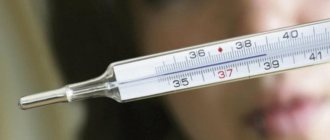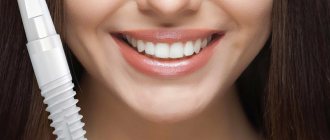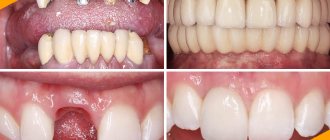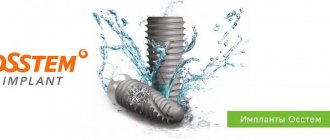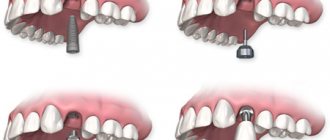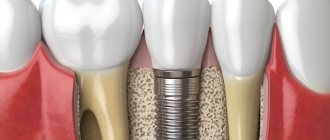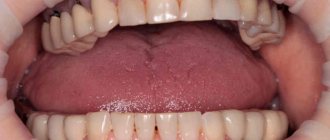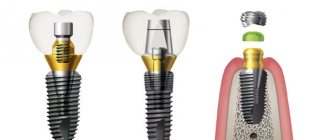To restore the dentition after the loss of one or more teeth, a few years ago dentists suggested installing a bridge or a removable denture. To install the bridge, adjacent healthy teeth were ground down, which led to accelerated destruction. Removable dentures require complex care, last a limited time and break at the wrong time.
But there is another technology for restoring the dentition: you can place a tooth implant, one or more. A dental implant is a titanium or bioceramic rod that is implanted into the jaw bone. It becomes a support for the crown and is indistinguishable from an ordinary tooth. A bridge can be installed on it or a removable prosthesis can be attached. The number of implants is not limited; lost molars, premolars, canines, and incisors can be completely restored.
The only limitation in restoring the beauty of a smile can be the price of dental implants. But dental implantation in Moscow is becoming a common service in clinics offering prices in the middle price segment. New technologies are being developed, and the cost of dental implants is increasingly becoming a reason to abandon advanced prosthetic technology.
Research is underway in laboratories, scientists are developing new ways to make better dental implants. Manufacturers make structures implanted into the jaw bone tissue from a metal alloy Ti-6Al-4V containing titanium, aluminum and vanadium. To improve the survival rate of foreign bodies, you can use products made from titanium purified from impurities (G4Ti), its alloys with zirconium dioxide, or bioceramics - a nanostructured ceramic material. Dental implants, which are more expensive, take root better. Their molecules penetrate deeper into bone tissue, and they grow together into a single whole.
When visiting the dentist, some patients ask for the most expensive dental implants, believing that the increase in the cost of a dental implant increases the likelihood of its successful implantation and service life. This is wrong. Dental implants are produced by more than 350 companies in different countries. The cost of dental implants depends on the level of taxation, the level of wages in the country, the financial policy of the company, the materials used, technologies, and export/import duties. The patient does not always need to have structures made from more expensive materials implanted. For some, implants made from an alloy of titanium, aluminum, vanadium take root better than bioceramic ones.
The choice of material and type of structure depends on bone density, implantation site (incisor or molar), gum thickness, and patient’s age. The use of dental implants, which cost more, may be advisable:
- when restoring incisors and canines, which are visible when a person smiles or talks;
- with a lack of bone tissue;
- with shortened treatment periods, if prosthetics are planned to be done 3-5 days after implantation of the structure.
Before starting treatment, ask your dentist what dental implants, types and prices he recommends and why.
Manufacturers rating
When choosing dental implants, you do not need to rely on the opinions of friends who have had them installed before, or on reviews on the Internet. In the review, a person describes dental implants, types and prices, a few days or weeks after surgery. But how he will behave in a year or three is rarely written about. And patients do not indicate why the doctor recommended specific dental implants, the prices of which are higher or lower than average. Perhaps the person has weak bone tissue, diabetes, or, conversely, is under 30 years of age.
If dental implantation is to be done, prices and reviews should not be the deciding criteria. But it is useful to know the statistics: what dental implants are used by implantologists in Europe. Of the 350 manufacturers, there are 5 clear leaders, accounting for more than 60% of the market:
- Straumann are leaders, accounting for up to 18% of sales in this segment.
- NobelBiocare – slightly behind Straumann, 17% of the market.
- AstraTech - Approximately 15% of the structures used are manufactured by AstraTech.
- 3i Biomet – about 7% of sales.
- Zimmer – approximately 6% of sales.
The prices for dental implants they offer are above average. Another 37% of the market is accounted for by the remaining more than 300 small manufacturers. Some have their own patented inventions that improve the composition, design and performance properties of implants. Israeli manufacturers AlphaBio, MIS and Korean Osstem offer lower cost of dental implants, but good quality.
Implants from different manufacturers can differ greatly in design and materials. Not all of them are widely used in Russia. Look at the overview of the structures used for dental implantation in Moscow, their prices in 2022.
What is implantation
In the majority, people generalize methods for restoring teeth under the concept of “prosthetics.” This is not entirely correct. Implantation is a stage of reconstruction, which is the installation of an artificial root (implant), onto which a crown or solid prosthesis is subsequently attached.
Implantation is performed with an estimated period of 5 to 30 years. The service life of the product has the main influence on when the next dental implantation will be required, but there are a number of other factors that can shorten not the warranty period, but the actual service life.
In order to extend the period of wearing artificial roots, it is necessary to pay special attention to preparing for the procedure, to choose the right clinic/doctor and the products themselves, before carrying out the mini-operation to install the pins.
How do implants differ from each other?
In order for the installation of a dental implant to be successful, the doctor must take into account the age, medical status of the patient, the volume and condition of the bone tissue at the site of implantation. Based on these factors, he selects the surgical technique and recommends implants that have a higher chance of survival.
When choosing dental structures, the implantologist takes into account:
- what material they are made of (pure medical titanium or alloys, bioceramics);
- shape (cone or cylinder);
- surface type;
- thread type.
Materials
Economy class dental implants are made from an alloy of titanium with aluminum and vanadium. By adding aluminum and vanadium, manufacturers reduce the cost of products, but due to these impurities, the implant fuses more slowly with the jaw bone tissue. If the patient is young and does not have bad habits or chronic diseases, this has almost no effect on the survival rate of the structure, but the duration of the postoperative period increases. Many patients are willing to undergo treatment a little longer, but cheaper.
If the patient is over 50 years old, has minor abnormalities in the blood composition, or other diseases that are not absolute contraindications to dental implantation, the cost of prosthetics should not be a decisive factor. In such patients, the speed of implantation is reduced, and further slowdown increases the risk of rejection of the structure and the development of inflammatory processes. It is more expedient for them to install more expensive products made of titanium purified from impurities or an alloy of purified titanium with zirconium dioxide. These materials are used by manufacturers Straumann, NobelBiocare, AstraTech, Osstem.
The Straumann company also produces structures from bioceramics. They contain no metals. They can be installed in patients who already have bridges made of different metals or with allergies to metal or certain diseases (leukoplakia). When implanting bioceramic products, microcurrents do not form in the oral cavity.
Bioceramic dental implants, the prices of which are higher, are recommended for prosthetics of incisors and canines, which are visible when talking or smiling. With age, atrophy of the jaw bone tissue occurs, and the implanted structure is covered only by the mucous membrane of the gums. With constant contact with metal, it acquires a bluish tint. When in contact with bioceramics, this effect does not occur, and the gums under the implants and living teeth have the same color.
Surface
The survival rate and comfort of implants is influenced not only by their shape and the material from which they are made, but also by the method of surface treatment. The forms of dental structures are developed by large manufacturers, and smaller ones copy them. It is more difficult to copy the method of surface treatment: some technical solutions are not disclosed, others are known, but their repetition increases the cost of production and the price of dental implants.
The first stage of surface treatment for all manufacturers is sandblasting. It makes the surfaces rough, which improves the exchange of molecules between the implanted product and bone tissue and accelerates their fusion. But different manufacturers use different processing technologies. For economy-class implants, alumina is used, but after contact with it, impurities remain on the surfaces, which impair survival. More expensive designs are treated with titanium oxide.
The second stage is acid etching. When acid hits metal or bioceramic surfaces, it forms micropores ranging in size from 3 to 10 microns. If the implant has been acid etched after sandblasting, it is marked SLA. Manufacturers who limit themselves to the first stage only label their products with RBM.
Acid etching increases survival rate by 20-30% compared to products that have undergone only sandblasting. The primary stability of the structure increases and the risk of its rejection in the first days after implantation is reduced. On surfaces with micropores of 3-10 microns (the size of the pores varies from manufacturer to manufacturer), cells responsible for the growth of bone tissue multiply more actively. The area of contact between the implant and bone tissue increases. The larger the surface area, the more actively the splicing takes place and a stronger connection is formed.
Sandblasting is performed by most manufacturers, and many supplement it with acid etching. But this treatment gives the surfaces hydrophobic properties. They slow down survival and increase the risk of failure. To overcome this disadvantage, manufacturers use negatively charged ultra-hydrophilic SLA surfaces. Additional processing accelerates the deposition of fibrin threads, and the structure fuses with the bone faster.
Another way to improve the characteristics of implants is to treat the surfaces under pressure with phosphorus, calcium phosphate, and fluoride ions. These substances activate the growth of bone tissue around the dental structure and accelerate its growth into metal or bioceramics. Reducing the implantation period reduces the risk of rejection. Before prosthetics, you do not need to wait 3-6 months to obtain a strong connection; it can be done in 2-4 weeks, and in some cases, immediately after implantation.
Rating of implant surfaces from different manufacturers
Comparing the production technology and surface characteristics of products from different manufacturers, reviews from doctors and patients, we can name the best manufacturers:
- Nobel-Biocare. They produce dental structures with Ti-Unite surfaces. They undergo sandblasting and acid etching. Hydrophobic properties are removed, the surface is ultra-hydrophilic with a negative charge. The dental implant is adonated in an electrolyte solution, which increases its biocompatibility with the inert tissue of the jaw. After implantation, it is stable; inflammatory processes and rejections occur in less than 4% of patients in the first days after implantation. To shorten the postoperative period and quickly survive, a layer of phosphorus is applied to it.
- They produce dental implants of the Roxolid and G4Ti types with ultra-hybrophilic “SLActive” surfaces. Roxolid structures are made from an alloy of titanium and zirconium dioxide, G4Ti - from pure titanium. They are sandblasted and etched with a company-patented acid composition. Roxolid has the lowest rejection rate, despite the fact that they are often installed in elderly patients and people suffering from diseases that increase the risks of implantation.
- They produce dental structures with OsseoSpeed surfaces. They are sandblasted with titanium dioxide. After such treatment, unlike alumina, there are no foreign impurities left on the surfaces that slow down implantation. At the second stage, treatment with hydrofluoric acid is carried out, after which micropores are formed. Additionally, a dental implant, the price of which is 10-15% higher than the average, is impregnated with fluoride ions, undergoes nanostructuring and eliminates hydrophobic properties.
Shape and carving
To successfully replace a tooth, the implant must be shaped to closely resemble the natural shape of the root. But the root is initially connected to the bone tissue of the jaw; it does not need to be inserted into it. Dental structures for implantation are produced not only in conical, but also in cylindrical shapes. The frequency, depth, and pitch of the thread on them also differ.
Bone tissue can have different densities. The harder it is, the more difficult it is to insert the structure, but the better it holds in the first days. Dense tissue has fewer blood vessels, and the structure takes root more slowly, merging with the bone. If the bone tissue is soft, implants are easier to insert, but they are unstable in the postoperative period, but implantation and the formation of new connective tissue proceed faster.
Bone tissue is divided into 4 types depending on its density. The densest is type D1, the softest is D4. The highest survival rate is in patients with bone tissue type D2, then D3, D1 and D4.
How to choose the shape and thread of implants
Patients with dense bone tissue (D1, D2) are fitted with a cylindrical dental implant, the price of which may be lower than average (if molars, premolars are prosthetic). It is possible to install conical structures (the doctor takes into account not only the density, but also the volume of bone tissue at the site of prosthetics). To reduce trauma to the jaw, manufacturers cut shallow threads with wide pitches. In dense fabric they are held well without additional support and pressure on surrounding tissue. To facilitate their insertion and further survival, the manufacturer AstraTech uses two types of threads on one rod: micro thread in the neck area and shallow thread along the entire length.
Conical implants (for example, NobelActiv, manufactured by NobelBiocare) are inserted into the soft bone tissue (D3, D4). The conical shape increases their stability. The carving is well defined, with a minimum pitch. When they are screwed in, the soft bone tissue becomes denser and better holds the implanted rod.
Dental implants: reviews, rating 2022
Implantologists speak positively about several dozen manufacturers of dental structures. Each product has its own advantages, but most also have disadvantages - absolute or relative, which make them unsuitable for certain groups of patients. Not all of them are available for dental implantation in Moscow. Small manufacturers can work in the domestic markets of their countries, or export small quantities of products. After analyzing the ratio of pros and cons of accessibility, we can make the following rating:
Straumann (Switzerland)
Advantages:
- out of 100 installed artificial teeth, 97-99 successfully take root and last more than 10 years;
- after installation, natural renewal of bone tissue is maintained - its height decreases by no more than 0.45 mm over 5 years (average);
- the surface is ultra-hydrophilic, hydrophobic properties that slow down healing are removed;
- dental structures are made from different materials: titanium, purified from impurities, an alloy containing titanium and zirconium dioxide (Roxolid) and bioceramics;
- implantologists consider Roxolid to be the best composition used in 2020-2021;
- recommended for installation in patients at risk - those suffering from diabetes, osteoporosis, smokers;
- They have a short survival period; it is possible to install a crown immediately after implantation or after 1-6 weeks.
Flaws:
The only disadvantage of a dental implant is the cost. The operation costs about 51 thousand rubles, but there are additional costs when preparing for the operation or in the postoperative period.
AstraTech (Sweden)
Advantages:
- out of 100 installed artificial teeth, 98-100 successfully take root and last more than 7 years;
- after installation, natural renewal of bone tissue is maintained - its height decreases by no more than 0.25 mm over 5 years (average);
- the OsseoSpeed surface is ultra-hydrophilic, hydrophobic properties that slow down healing have been removed, and it is additionally treated with fluoride ions, which accelerates the growth of new connective tissue;
- recommended for installation in patients at risk - those suffering from diabetes, osteoporosis, smokers;
- They have a short survival period; it is possible to install a crown immediately after implantation or after 1-6 weeks.
Flaws:
- when installed in soft bone tissue (D3, D4) in the first days after surgery, the risk of rejection increases compared to structures in the shape of a pointed cone and with deeper and more frequent threads;
- Early loading of single implants in soft bone tissue is not recommended;
- the cost of installing a dental implant is from 43 thousand rubles, not counting the costs during the preparation of the operation or in the postoperative period.
NobelBiocare (Switzerland)
Advantages:
- out of 100 installed artificial teeth, 96-100 successfully take root and last more than 3 years;
- the TiUnite surface is ultra-hydrophilic, hydrophobic properties that slow down healing have been removed, and it is additionally treated with phosphorus;
- recommended for installation in patients at risk - those suffering from diabetes, osteoporosis, smokers;
- have a short survival period, it is possible to install a crown immediately after implantation or after 1-6 weeks;
- the company offers technology for permanent prosthetics in the complete absence of teeth on 4 special dental implants.
Flaws:
- phosphorus treatment slows down the implantation process in the first days, and with soft bone tissue early loading should be used with caution;
- some patients refuse NobelBiocare designs after learning how much a single tooth implant costs - from 42 to 80 thousand rubles, not counting the costs during the preparation of the operation or in the postoperative period.
ROOTT (Switzerland)
Advantages:
- the company manufactures the “Roott-Compressive” and “Roott-Basal” models, which are installed in the deeper parts of the jaw bones when it is impossible to perform a standard operation due to the small volume of the bone;
- 90% of patients with insufficient jaw bone tissue can receive implants without resorting to bone grafting, which reduces invasiveness;
- short survival time - installation of permanent bridges is possible three days after surgery;
- the traumatic nature of the operations is lower than when installing structures from other manufacturers; they are recommended for elderly patients and smokers;
- inexpensive dental implantation, the price for installing one implant is 24-28 thousand rubles (without preparatory and postoperative procedures).
Flaws:
- The “Roott-Compressive” and “Roott-Basal” models are installed in areas of the gums where at least three teeth are missing in a row; they are not used to restore 1-2 incisors or molars, but for such patients the company produces the “Roott-Form” model.
MIS (Israel)
Advantages:
- meet the standards of Israeli medicine;
- there are models with non-hydrolic or ultra-hydrophilic surfaces, and implants of the V3, C1 and Seven series are additionally treated under pressure with phosphates;
- have a short survival period, it is possible to install a crown immediately after implantation or after 2-4 weeks;
- inexpensive dental implantation, prices for models with non-hydrol surfaces from 24 thousand rubles.
Flaws:
- an alloy of titanium with vanadium and aluminum is used; they are not recommended for patients with an increased risk of rejection (patients with diabetes, osteoporosis, smokers).
Osstem (Korea)
Advantages:
- the surface of products of the TS-III, CA series is ultra-hydrophilic, hydrophobic properties that slow down healing are removed;
- take root well when installed in patients with low jaw bone density;
- low price of a dental implant - for patients who are not in risk groups and are ready to postpone prosthetics for 2-3 months, this is a good opportunity to save money without giving up convenience and durability.
Flaws:
- not suitable for patients with high jaw bone density (types D1, D2) due to the risk of rapid bone atrophy and exposure of the neck of the metal rod;
- It is not recommended to install crowns until the core and bone have fused (up to 8 weeks).
AlfaBio (Israel)
Advantages:
- out of 100 installed artificial teeth, 95-98 successfully take root and last more than 5 years;
- surfaces are sandblasted and etched with acid to form micropores;
- you can choose models for hard and soft bone tissue, restoration of one or more teeth and other situations;
- the characteristics of the “SPI” model are not very different from NobelActiv, but installing a dental implant (surgical stage) costs 22 thousand rubles.
Flaws:
- hydrophobic properties, which slow down engraftment and increase the risk of rejection;
- made from an alloy of medical titanium with vanadium and aluminum, this material fuses more slowly with the jaw bone;
- not recommended for patients at increased risk of rejection.
The amazing effect of titanium in dentistry
The highest strength, resistance to aggressive environments, non-toxicity, biological compatibility, low specific gravity, non-magneticity and availability have made titanium one of the most popular materials in modern dentistry.
Until recently, this metal was used by dental technicians only to impart a white color to plastic prosthetic structures. However, in recent years, titanium has increasingly begun to be used in orthopedics for the manufacture of reliable, durable and aesthetic dental crowns.
How to choose?
If you are healthy, under 50 years old, do not smoke, are willing to wait up to 6 months for the implant to survive and receive prosthetics, and want to restore a molar or premolar, you can get dental implants, which cost less. It is reduced by manufacturing from a titanium alloy with vanadium and aluminum, the absence of ultra-hydrophilic surfaces, acid etching and coating with phosphorus or other substances that accelerate healing.
If you smoke, have diabetes, osteoporosis, or are over 50 years old, you need implants made of pure titanium or its alloy with zirconium dioxide or bioceramics. After sandblasting and acid etching, the surface acquires hydrophobic properties that slow down implantation. Choose a design with an ultra-hydrophilic surface. Straumann implants have the best combination of characteristics. They produce several models, Roxolid has the highest survival rate. If you are confused about how much a Straumann dental implant costs, you can install Osstem or MIS. When implanting Osstem structures, prosthetics are postponed for 3-6 months. MIS has no such restrictions; healthy people with dense bone tissue can have a prosthesis installed after surgery or after 5-15 days.
If there is insufficient jaw bone tissue, it is better to install a basal type implant (manufactured by the Swiss company ROOTT). It is inserted deeper into the jaw bone and is more stable. This operation is indicated for elderly people, smokers, patients with diabetes, and osteoporosis.
When a titanium root cannot be placed
Contraindications of a psycho-emotional nature:
- psychoses of various etiologies;
- depression, psychopathy;
- hypochondria.
Somatic nature:
- General absolute:
- tuberculosis, sexually transmitted diseases, HIV and other seropositive infections;
- systemic bone diseases (primary osteoporosis, osteomalacia, dysplasia, etc.);
- hemorrhagic diathesis, impaired coagulation and other blood diseases;
- pathologies in the functioning of the endocrine system (type 1 diabetes mellitus, diseases of the adrenal cortex, etc.);
- chronic pathologies of the cardiovascular system;
- cancer;
- connective tissue diseases;
- pathologies of the oral mucosa.
- any chronic diseases at the compensation stage;
- old age (over 55 years);
- bruxism;
- alcohol, nicotine, drug addiction;
- pregnancy (1-3 trimester);
- weakened immune system;
- the presence of metal endoprostheses in the body;
- hormonal, chemotherapy and treatment with other drugs that impair tissue regeneration.
- diseases of the oral mucosa in the relapse stage;
- macroglossia;
- unsatisfactory state of the structure of the dental system;
- abnormal bite;
- poor oral hygiene;
- remnants of roots, cysts of various origins.
Selecting implants for the anterior teeth
Crowns are placed on rods that are implanted into the jawbone. They are not visible; outwardly they do not differ from living teeth.
When implanting teeth, the beauty of your smile depends on the type and price of the structure. When metal or bioceramic rods are installed in the jaw, the bone sags. This is not noticeable in the first year. The normal amount of atrophy is less than 1 mm per year for the first four years after prosthetics and 0.2 mm per year after 4-5 years. As the bone settles, it exposes the head of the rod; it is covered only by gum tissue. With constant contact with metal, it changes its color and acquires a bluish tint, which is clearly noticeable.
In order for the smile to remain beautiful and the gums to look healthy, when implanting incisors and canines, it is necessary to install structures that provide a minimum amount of atrophy: AstraTech (0.25 mm over 5 years) or Straumann (0.45 mm over 5 years). Most manufacturers do not indicate this indicator in the technical specifications. Independent studies were conducted, but not all models were included in them. And their performance from one manufacturer can vary greatly.
But it will not be possible to avoid atrophy when installing any model. To prevent gums from changing color, install a dental implant made of bioceramics to restore an incisor or canine.
If there is insufficient bone volume, implantologists recommend installing modern basal type dental implants ROOTT or Straumann.
General characteristics
Most materials used to make high-precision replacement crowns are expensive. Titanium crowns installed on teeth are biologically compatible with the human body, the same as gold, eliminating the possibility of an allergic reaction.
The use of titanium in prosthetics has become widespread - the material makes it possible to create practical and reliable structures, both removable and permanent. The functionality of titanium crowns allows their use as supporting, aesthetic, protective and restorative elements.
Dental implants: types and prices in Moscow in 2022
The cost of a turnkey dental implant in Moscow includes the price of the design, surgery and abutment with a crown. It may differ in different clinics by 20-30%. When calculating how much it costs to install a dental implant, sometimes you need to add the costs of bone grafting and sinus lifting. They are done if the jaw bone does not have enough volume to accommodate an implant. But sometimes, instead of bone grafting, basal-type structures can be installed. Prices for turnkey dental implantation also depend on the type of prosthetics (removable, fixed) and crown material.
Premium designs include:
- Straumann - the price for a dental implant in Moscow starts from 65 thousand rubles when installed with a metal-ceramic crown, and from 90 thousand rubles if you choose a crown made of zirconium dioxide.
- Astra Tech - from 70 thousand rubles with a metal-ceramic crown, from 80 thousand - with a zirconium dioxide crown.
- NobelBiocare - from 80 thousand rubles with a metal-ceramic crown, from 90 thousand - with a zirconium dioxide crown, with fixed prosthetics for a toothless jaw - from 370 thousand (four implants are installed, a fixed prosthesis is attached to them), the dentition is completely restored.
Among budget designs, implantologists recommend:
- Roott-Form - how much does implantation of 1 tooth cost depends on the material of the crown, with a metal-ceramic crown - from 54 thousand, with a zirconium dioxide crown - from 63 thousand rubles.
- Roott - used to restore a group of adjacent teeth, installed when there is insufficient volume of jaw bone without bone grafting; how much dental implantation costs depends on how many implants need to be placed. Installation of 1 basal component costs from 35 thousand rubles. For fixed prosthetics of a toothless jaw (6-10 basal components and a bridge) – 230-325 thousand rubles, depending on the type of bridge.
- AlphaBio - from 35 thousand rubles with a metal-ceramic crown, from 50 thousand - with a zirconium dioxide crown.
- MIS – from 35 thousand rubles with a metal-ceramic crown, from 50 thousand – with a zirconium dioxide crown.
- Osstem - from 35 thousand rubles with a metal-ceramic crown, from 40 thousand - with a zirconium dioxide crown.
What else does the success of dental implantation depend on?
You can name the best dental implants in Moscow based on the totality of their characteristics. But the significance of the indicators for patients who are or are not included in risk groups, who are restoring incisors or molars, who are ready to wait three months for prosthetics, or who want to complete treatment in 1-2 weeks, is not the same. And if you also take into account how much a dental implant costs, then it will not be possible to give recommendations on the choice in absentia and in general terms. Discuss this issue with the dentist who will perform the operation.
It takes into account one more factor: the implantation technique:
- The classic two-stage method - having installed the rod, the doctor completely sutures the mucous membrane above it and creates sterile conditions for the implant to heal. When pathogenic bacteria multiply in the oral cavity, they will not enter the surgical field and will not cause inflammation. When the rod fuses with the jaw bone, the surgical damage heals, the second stage of the operation is carried out - opening the gum mucosa above it, removing the plug screw and installing the gum former. This method is recommended for smokers, the elderly, and people with weakened immune systems. But prosthetics are done after 3-6 months.
- One-stage - after installing the rod, the gum above it is not sutured, but a former is immediately placed. The gum contour is formed from the first days after surgery, but oral fluid enters the surgical field. The immune system of healthy people controls the growth of unwanted bacteria, and inflammatory processes do not develop. But, if the immune system is weakened, saliva contains carcinogenic substances obtained by inhaling tobacco smoke, the risk of inflammation and rejection of the implanted structure increases. Using this technique, a permanent bridge can be installed within 2-6 weeks. But it is not used if the patient is over 50 years old, smokes, has osteoporosis, diabetes, is prone to inflammatory processes on the skin, and frequent colds.
- Without delaying prosthetics - a temporary plastic crown is installed on the rod on the day of surgery, a few hours after implantation. It is used if one incisor or canine is missing in the dentition, and the patient experiences severe discomfort when communicating, or if his appearance is directly related to his ability to work.
- In case of complete absence of teeth, when installing basal structures in the deep layers of the jaw bone, a permanent bridge can be placed on the rods 1-3 days after the operation. The number of basal components is determined for each patient.
Indications for installation
The use of implants must have a strict justification. Data from a general medical history and a conclusion about the state of oral health are taken into account.
The indications are highlighted:
Are common:
- high quality jaw bone at the installation site;
- sufficient volume of mucous membrane;
- gag reflex, allergy to removable denture materials;
- psychological discomfort during classical removable prosthetics;
- patient's conscious attitude towards oral health.
Individual:
- defects of the end teeth in a row on one or two sides, in which, with the help of implantation, permanent prosthetics become possible in the future;
- the absence of several chewing teeth, their incorrect position over a large extent (from 3 units);
- one lost tooth, and the patient’s reluctance to prepare neighboring ones to install a bridge;
- atrophy of the alveolar ridge due to impaired fixation of removable dentures;
- complete edentia, especially with insufficient height of the alveolar ridge;
- malfunction of the facial muscles and pain due to the lack of functional occlusion.
Dental implants: reviews, harm, contraindications
On the websites of dental clinics they publish reviews about the installation of implants, prices of teeth, types, and manufacturers. Objectively, patients evaluate the price of treatment, the attitude of dentists, and the results in the first weeks after surgery. But who will write a review 5-7 years after surgery? Reading reviews, you can find information about rejections of structures, but the patient does not objectively determine whether this is the doctor’s fault.
The dentist’s skill is evidenced by photographs in which it is impossible to distinguish between your teeth and implanted teeth; the gums retain their natural color. Objective feedback on the quality of implants can be given by implantologists who have been practicing for more than 5 years.
Pros of implantation
The average survival rate of implanted dental structures after 5-7 years is 95-98%. In dentistry, dental implantation is becoming a frequently performed operation. It is safe; cases of rejection and development of dangerous complications are less than 5%. When implanting rods and installing fixed dentures on them, the dentist does not touch the adjacent teeth, does not grind them down, does not remove nerves, and the patient retains his healthy teeth longer, which are more reliable than implants, bridges, and removable dentures.
When implanting teeth, the price for 1 tooth from manufacturers AlphaBio, MIS, Osstem with a metal-ceramic crown is almost equal to the price of preparing one patient and two adjacent healthy teeth for the installation of a fixed bridge.
Having implanted implants in a patient, the dentist installs permanent bridges even in the absence of teeth, which is impossible with other treatment methods.
Minuses
In negative reviews from patients, more complaints are not about the rejection of dental structures, but about a change in the color of the gums under successfully implanted implants, exposing their neck. The cause of unpleasant changes is bone atrophy. But they can be slowed down if structures that cause minimal atrophy are installed (AstraTech, Straumann, NobelBiocare). You can avoid blueness of the gums under the incisors and fangs, noticeable when talking or smiling, by abandoning metal rods. Bioceramics does not enter into chemical reactions with tissues and does not change their color.
Rapid subsidence of the jaw bone under an implanted tooth is associated with the wrong choice of dental structure, implantation technique, errors during surgery or subsequent prosthetics.
Before implanting a dental structure, the dentist measures the thickness of the bone. The distance between the rod and the front surface of the gum must be at least 2 mm, otherwise it will atrophy faster (the level decreases by more than 1 mm per year). To prevent this, the implantologist can do additional tissue grafting and increase the bone volume.
But even with normal bone thickness, atrophy can be increased due to the thin biotype of the gum. It can be increased by transplanting a piece of mucous taken from the palate.
Atrophy also increases due to the close distance of the rods to the roots of adjacent teeth. It must be at least 3 mm. It also needs to be maintained if two implants are installed side by side.
Take your doctor's advice with an open mind. And if you doubt that there is a reason to do an indirect plastic surgery, install a specific dental structure, or perform a one-stage or two-stage operation, get an independent consultation from a dentist in another clinic.
Term of use
The duration of operation is affected by:
- compliance with the surgical protocol of the operation;
- level of biocompatibility of the material;
- shape, surface of the implant;
- load conditions;
- quality of manufacture and installation of the prosthesis;
- compliance by the patient with the rules of oral hygiene, etc.
On average, the service life is 5-10 years. If all medical recommendations and hygiene rules are followed, implants can last up to 25 years.
Manufacturers of premium implant systems provide a lifetime warranty on their products.
